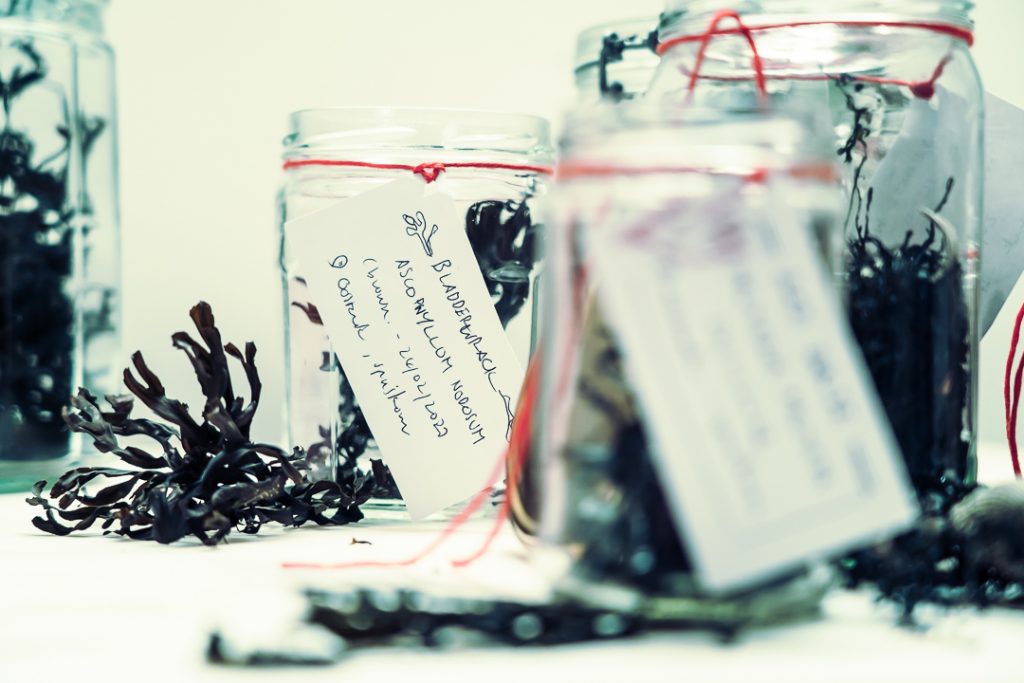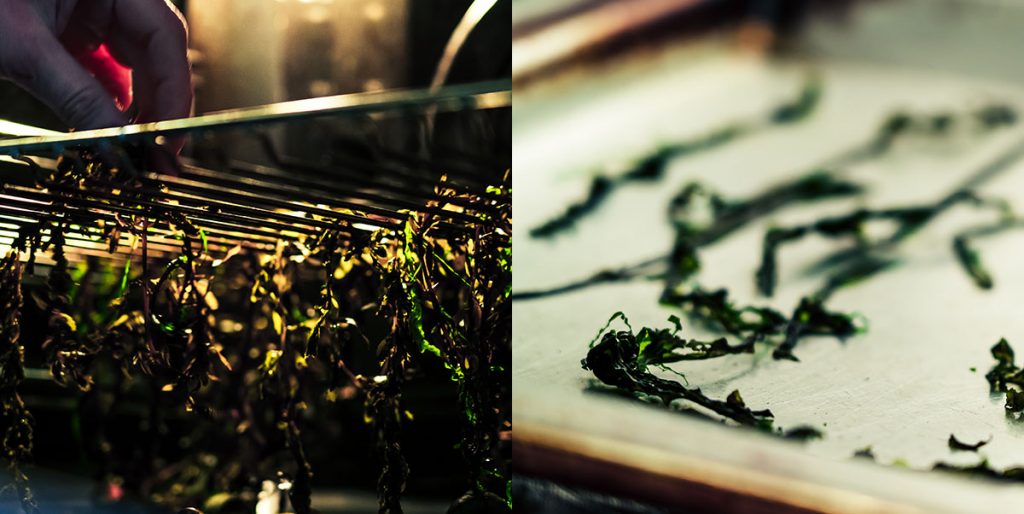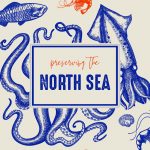A couple of weeks we met up with Donald the Seaweed chef. Joseph already wrote about our encounter on the shores of the North Sea, but I thought a local yet exotic crop such a seaweed deserved some culinary attention as well. It was very surprising to me that the abundant , nutritious, and versatile seaweed family it not to be found in old recipe books from Belgium – or maybe even the whole European region.
In Donald`s and my opinion the should be! It is a crop that grows steadily in the North Sea without the interference of people. It’s a source of vitamins, antioxidants and ‘healthy’ salt and with a little creativity, it can give some surprising results in the kitchen.

The abundant seaweed
Donald provided us with six different kinds of glistening, freshly harvested seaweeds. Way too much for us to consume right way, but… that’s another great thing about seaweed:
- Japanese wireweed (Sargassum muticum)
- Red dulce (Palmaria palmata)
- Irish moss (chondrus crispus)
- Bladderwrack (Ascophyllum Nodosum)
- Sea oak (Fucus spiralis)
- Agardhiella subulata
you can easily dry it and store it almost indefinitely for later use.

Drying seaweed
Drying seaweed is as easy as it gets. On a warm sunny day you can easily hang your harvest over a clothes line and let the sun do it’s work , but during the colder months of the year your radiator or oven will serve it’s purpose.
- Remove any shells and small animals.
- Rinse the freshly harvested seaweed multiple times until thee water runs clear and there’s no more sand.
- Place the seaweed on trays and dry at 160 to 180 °C until completely dry (between 30 – 40 minutes). Turn ocassionly.
- You can store the dried seaweed indefinitely and rehydrate it when using.
Using dried seaweed
What about a North Sea ramen or ‘stoemp’ (mash) with salty greens? The North Sea is your oyster in many ways!
We all – or at least I did until now – see seaweed as an oriental / Japanese ingredient. But our little spree along the rocks of Oostende proves that seaweed is a regional delicacy. Donald creates cheese, sausages, crackers and even beer and gin with this ‘green gold of the sea’.
But you can easliy geet started with seaweeed in your own kitchen. Grind the dried seeaweed into a powder as a salt remplacement, or use it to flavour stocks and soups.





Recent Comments